Be careful! As you may be the next victim of the malware attack.
The epidemic of COVID-19 is creating an opportunity for cyber attackers. Last three months, the Australian Cyber Security (ACSC) registered over 140 complaints from businesses and individuals across Australia.
The complaints obtained so far remarked on the nature of phishing emails. According to the ACSC authority, the email received so far are of sophisticated, feeding in the desire information of COVID-19 to well-known government agencies, and organizations.
The received mails are much more sophisticated urging the visitors to click on the malicious links or visit fake websites that automatically download ransomware and malware on the device allowing the attackers to get hold of the confidential information and financial details.
The ACSC is aware of the significant rise in COVID-19 scam. So, far it has predicted to increase the scams over the coming weeks and months. ACSC has instructed every individual and organization to remain alert.
How to keep yourself safe from the COVID-19 scam?
The ACSC has produced a detailed report and instructions for both the individual and the organization. One can protect themselves by following these simple steps:
- Thoroughly go through the message, and check the tracking number, names, sender information, hyperlink and subject.
- If found dicey you can ring on the given official number. Double-check the information in the search engine. Do not contact the number listed in the message section, as these are likely to belong to the scammer.
- Use various sources to cross-check the given information. Go through the scam alert page like Australia post, as they are aware of every current scam.
How to identify the COVID-19 scam mails?
#1. SMS scam under the identification “my gov”
These scams appear on the same thread of “my gov” with the previous message you have received from myGov.
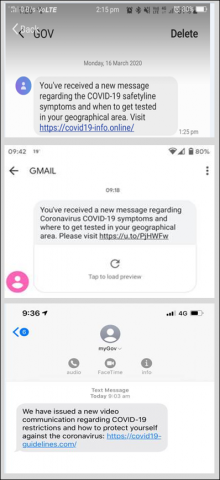
#2. Impersonating e-mails of COVID-19
These phishing e-mails agenda is to divert you to their website to steal your personal and financial information. Once these scammers have access to your detail information they get hold of your financial status (bank details or credit card info) and transfer payment to their account or convert it into bitcoin or make a luxury purchase.
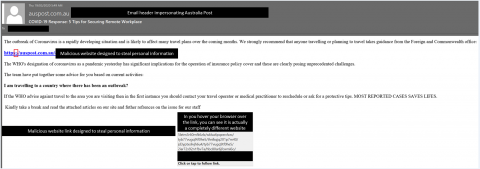
#3. E-mails pretending to be of the international health sector
The email is sent under the name of a renowned international health organization. They reveal new cases of COVID-19 and encourage you to click on the web link or to open an attachment to promote safety measures.
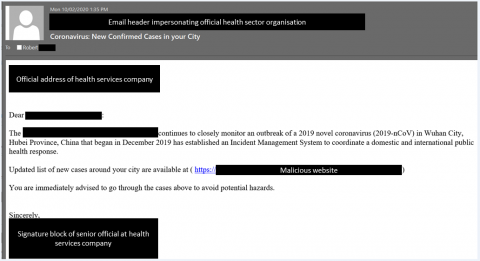
#4. Payment related scam
These emails are sent to Australians who are working from home or seeking to work from home. They generally send attractive financial aid to these employers in a form of the relief package. Opening such attachment downloads malicious software in the device.
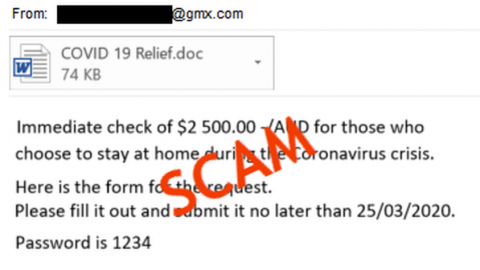
#5. Email attachment containing malware
Under the name of the World Health Organization (WHO), the email is sent. The email encourages users to open the attachment for safety measures to prevent the spread of COVID-19. When clicked on the link, the virus gets automatically downloaded on the device allowing the scammers to access the device.
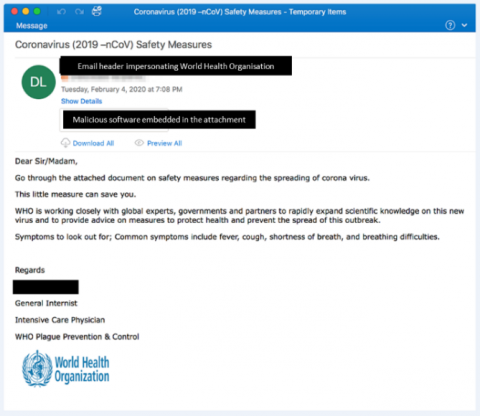
What to do if you have clicked on the given link?
If by chance, you have clicked on the malware links, and you are concerned that your financial details have been compromised, firstly connect with your respective financial institutions.
Encountered any financial loss, immediately report to the Cyber Crime authorities.
For information on COVID-19 visit health.gov.au!











